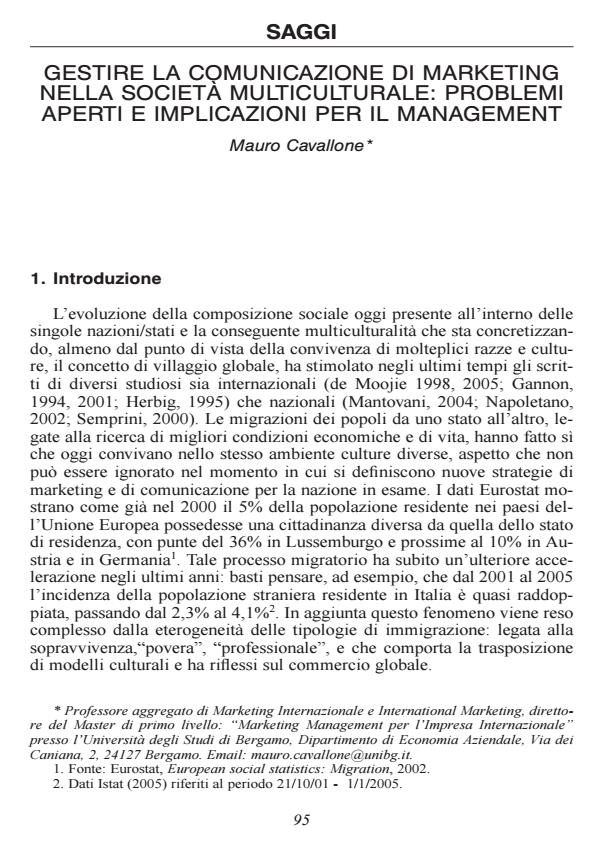Gestire la comunicazione di marketing nella società multiculturale: problemi aperti e implicazioni per il management
Journal title MERCATI E COMPETITIVITÀ
Author/s Mauro Cavallone
Publishing Year 2007 Issue 2007/1
Language Italian Pages 23 P. 95-117 File size 121 KB
DOI
DOI is like a bar code for intellectual property: to have more infomation
click here
Below, you can see the article first page
If you want to buy this article in PDF format, you can do it, following the instructions to buy download credits

FrancoAngeli is member of Publishers International Linking Association, Inc (PILA), a not-for-profit association which run the CrossRef service enabling links to and from online scholarly content.
In this article the necessary paths to an evolution of communication within marketing are discussed, as far as the social and cultural changes which have taken place inside individual countries/states, which lead marketing and international marketing to converge towards a new and challenging discipline: cross-cultural marketing. This article concentrates on the aspects relative to marketing communication which become so in culturally customized and/or cross-culturally customized ways. In particular, after having outlined the core traits of the current scenario in international marketing and having discussed the concepts of ‘culture’ and ‘cultural displays’, this current work will analyze their implications for marketing, calling for them to cross over from mono to cross-cultural. In the second part of the article attention is drawn to communication which arises from cross-cultural marketing and thus showing how we can deepen the distinction between culturally customized communication and cross-culturally customized communication. Keywords: culture, international marketing, crosscultural communication, customized communication, cultural adaptation.
Mauro Cavallone, Gestire la comunicazione di marketing nella società multiculturale: problemi aperti e implicazioni per il management in "MERCATI E COMPETITIVITÀ" 1/2007, pp 95-117, DOI: